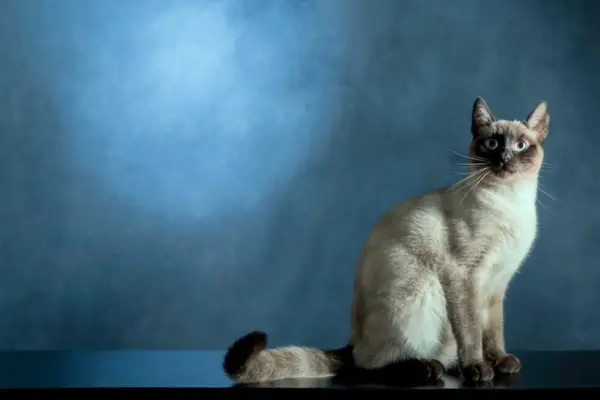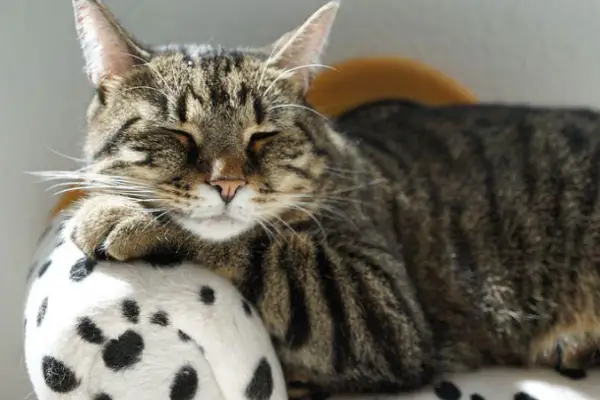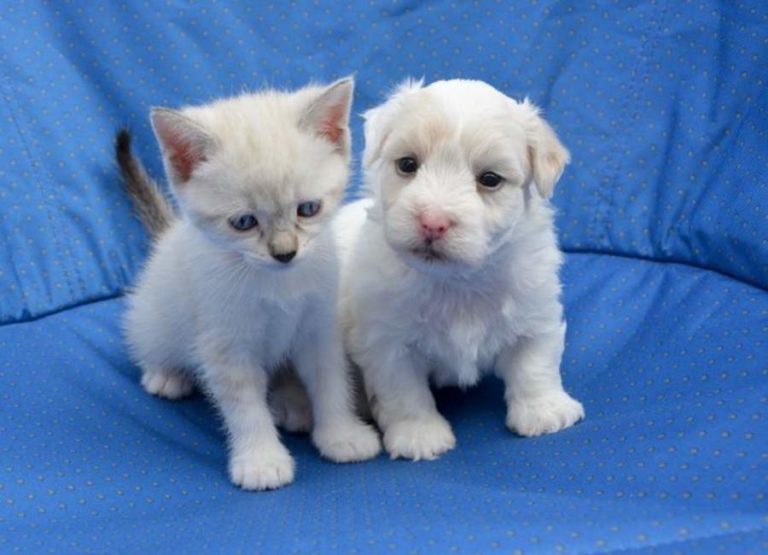When Do Siamese Cats Stop Growing (7 Factors Explained)

When do Siamese cats stop growing is exactly what we will be discussing all through this post, so keep reading!
We will also outline some common factors that may interfere with or affect the growth of Siamese cats.
So…
When Do Siamese Cats Stop Growing
At the age of 1 to 2 years around 8 and 12 inches (20-31 cm), the Siamese cats stop growing, and all developmental processes in a Siamese cat halt at this time, and then you can say your Siamese cat is fully grown.
Many things happen around a Siamese cat before they reach this age, the most noticeable of which is the continual increase in coat color intensity, consistent weight gain, and slow growth in height and length.
Because of its sluggish development rate, your Siamese kitten will weigh roughly 13 pounds when it reaches adulthood.
This increase in weight depends on what type of food you give your Siamese cat, but the general growth process halt between 1 to 2 years
So, what are the factors that can affect their growth…
Factors that influence the growth of a Siamese cat
There are certain typical elements to consider while contemplating the development of a Siamese cat, which are as follows:
1. Gender
A male Siamese cat grows larger than a female Siamese cat, which has a significant impact on final growth sizes.
A healthy mature male Siamese will weigh between 9 and 14 pounds, while a female will weigh between 7 and 11 pounds.
The male will stand between 16 and 20 inches tall, while the female will be between 15 and 19 inches tall.
Your cat’s size is determined by several factors, the first of which is its gender.
2. Feeding
Siamese cats may have a rapid growth rate that must be maintained by enough nutrition.
This means that kittens must eat the correct foods in the right amounts in order to develop properly.
Furthermore, the veterinarian will keep an eye on the kitten and determine the proper daily feeding amount based on its weight.
Siamese cats might benefit from particular vitamin supplements in addition to a proper diet to maintain their development.
Therefore, how fast your Siamese cat grows partly depends on the type of food you feed them.
Some choose wet food, some choose dry food, with my years of experience living with cats, wet food is better but more expensive.
Therefore, the optimal supplement alternatives for your Siamese kitten will be determined by a qualified veterinarian.
3. The runt of litter
A runt is an animal that is significantly smaller or weaker than the others in its group or litter in the case of cats.
Because of its small size, a runt in a litter has obvious disadvantages, such as difficulty battling for life with its siblings and the chance of rejection by its mother.
If your Siamese cat is the runt of the litter, it will grow more slowly than the rest of the litter and will take longer to reach its full potential.
This is a genetic variation between cats of the same litter and has an effect on the growth rate of your Siamese cat.
Some runts require more food, water, a good environment, and medical care to get to their final size.
4. Feline diseases
Siamese cats are a cat breed that has been connected to a variety of health issues, many of which can affect their growth.
Hairballs are a common health problem with Siamese cats, which are caused by a lack of or inconsistent grooming.
When you don’t groom your Siamese cat, he or she will groom themselves because the dead skin or hairs will lead them to scratch and lick the same hand with which they scratched, causing them to eat their own hair.
They produce hairballs as a result of their inability to digest their hair, which can lead to other issues such as vomiting and diarrhea.
When your Siamese cat is sick, it may not be able to feed properly, causing its growth to be stunted or delayed.
So, if your Siamese cat starts acting abnormally, make an appointment with your veterinarian; if you ignore it, your Siamese cat’s growth may be affected.
5. Environmental conditions
Environmental variables can play a part in how fast or slow your Siamese cat grows.
If your Siamese was a feral cat, that’s something to think about because most cats can be stunted as a result of this.
If he or she was wild before meeting you, it’s possible that they didn’t have enough food or water.
Many variables contribute to your Siamese cat’s little size, many of which are just a product of their upbringing.
Regardless of their size, be the greatest parent you can be for your Siamese cat, and you’ll quickly find that size doesn’t matter.
You must provide a healthy cat environment for your Siamese cat to reach its maximum growth.
There are many ways to take care of a Siamese cat to keep them happy and healthy.
6. Frequent stress
Even if there is no visible sickness, stress can influence our Siamese cat’s appetite and capacity to gain weight.
Cats can feel uncomfortable and unpleasant in the same way that humans do when they are stressed and resort to food.
Sudden movements, loud noises, and unruly children/pets are all common stressors for cats.
Consider improving your cat’s habitat and making their lives a little easier. You could notice that their appetite shifts as a result.
There are many ways to entertain a Siamese cat in order to keep them happy and healthy.
7. The breed
When kittens of various breeds are born together, their eventual size is affected.
This means a purebred may grow bigger and faster than a mixed breed and vice versa.
If you cross a Siamese with a huge Bengal cat, for example, you can get a kitten with a wide range of characteristics depending on the genes they acquire.
However, you’re more than likely to end up with a unique mix of cats with traits from both parents.
Any cross-breed is unlikely to meet either the pure breed’s average or standard.
Why is my Siamese cat so small
Your Siamese cat is so little because it is either the runt of the litter, has a genetic mutation, has been affected by the environment, is fed inappropriately or with the wrong food, or you are not patient with your ragdoll since Siamese cats grow slowly and consistently.
The first thing to remember is that Siamese cat development can be slow and steady, or it can be rapid in exceptional cases.

![Why Is My Cat So Aggressive Lately [See 9 Reasons] Why Is My Cat So Aggressive Lately](https://petcreeks.com/wp-content/uploads/2023/10/cat-7201639_640.jpg)


![Why Is My Kitten Drinking So Much Water [9 Reasons] Why Is My Kitten Drinking So Much Water](https://petcreeks.com/wp-content/uploads/2023/12/pexels-helena-jankovicova-kovacova-16440316.jpg)

